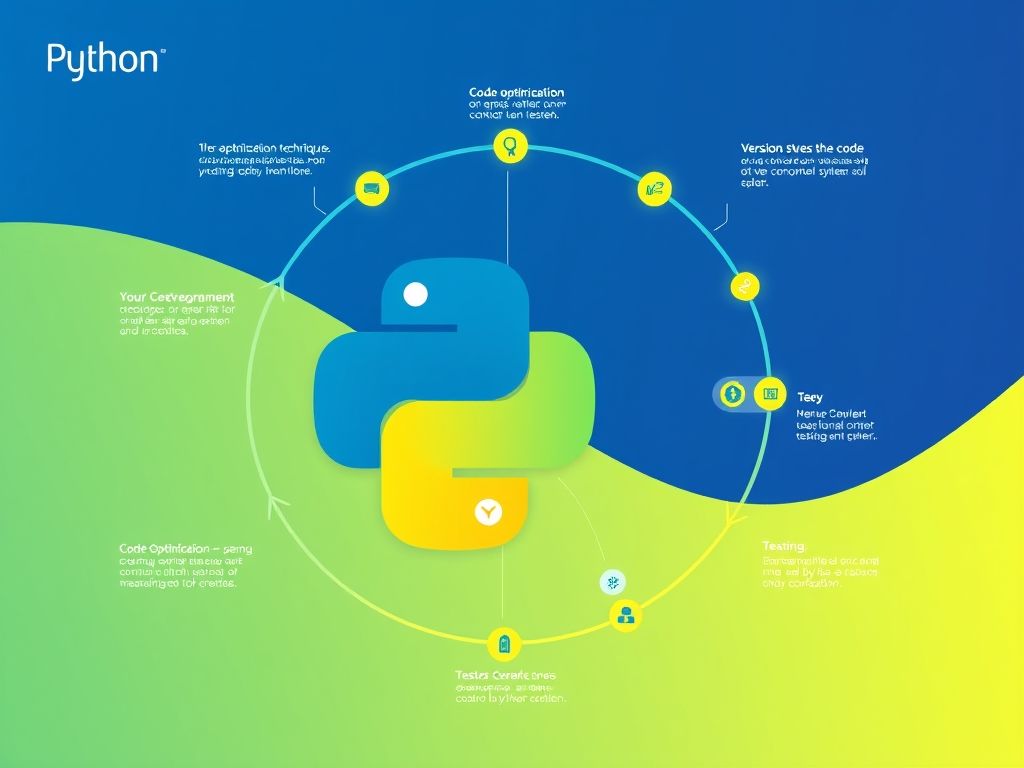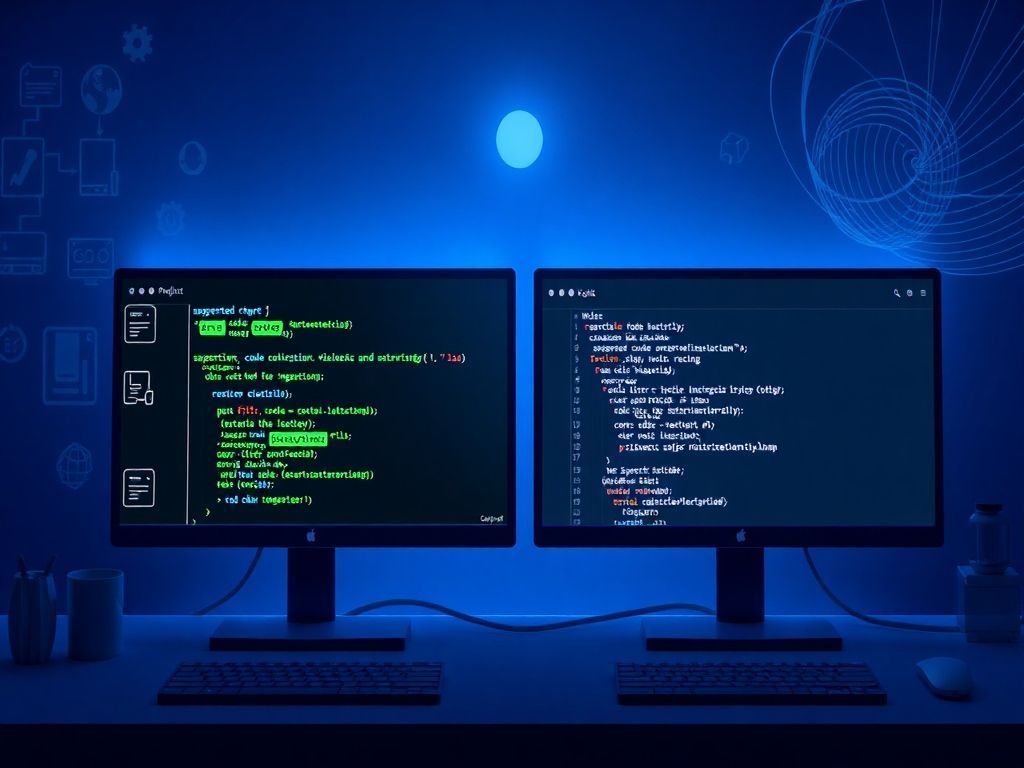Python programming is increasingly crucial for modern software development. This guide delves into Python programming, code optimization techniques, and essential development processes. Learning these skills empowers developers to build robust, efficient, and maintainable applications.
Chapter Title: Understanding Python Programming
Let’s delve into the core principles of Python programming. This chapter lays the groundwork for understanding more advanced concepts and techniques, including *tối ưu hóa code* (code optimization) which we’ll explore later. Python, known for its readability and versatility, is a powerful language suitable for a wide range of applications. Mastery of its fundamentals is crucial for effective *lập trình Python* (Python programming).
At the heart of any programming language are its data types. Python offers several built-in data types:
- Integers (int): Represent whole numbers (e.g., 10, -5, 0).
- Floating-Point Numbers (float): Represent numbers with decimal points (e.g., 3.14, -2.5).
- Strings (str): Represent sequences of characters (e.g., “Hello”, “Python”).
- Booleans (bool): Represent truth values (True or False).
- Lists: Ordered, mutable collections of items (e.g., [1, 2, “apple”]).
- Tuples: Ordered, immutable collections of items (e.g., (1, 2, “apple”)).
- Dictionaries: Unordered collections of key-value pairs (e.g., {“name”: “Alice”, “age”: 30}).
- Sets: Unordered collections of unique items (e.g., {1, 2, 3}).
Understanding these data types is essential for manipulating data effectively. For example:
“`python
age = 30 # Integer
price = 99.99 # Float
name = “Alice” # String
is_student = True # Boolean
my_list = [1, 2, 3] # List
my_tuple = (4, 5, 6) # Tuple
my_dict = {“city”: “New York”, “country”: “USA”} # Dictionary
my_set = {7, 8, 9} # Set
print(type(age)) # Output:
print(type(price)) # Output:
print(type(name)) # Output:
“`
Next, let’s discuss control flow, which determines the order in which statements are executed. Python provides several control flow statements:
- if-elif-else: Executes different blocks of code based on conditions.
- for loops: Iterates over a sequence of items.
- while loops: Executes a block of code repeatedly as long as a condition is true.
Here are some examples:
“`python
# if-elif-else
age = 20
if age >= 18:
print(“You are an adult.”)
else:
print(“You are a minor.”)
# for loop
for i in range(5):
print(i) # Output: 0 1 2 3 4
# while loop
count = 0
while count < 3:
print(count)
count += 1 # Output: 0 1 2
```
Functions are reusable blocks of code that perform specific tasks. They promote code organization and reduce redundancy.
```python
def greet(name):
"""This function greets the person passed in as a parameter."""
print("Hello, " + name + "!")
greet("Bob") # Output: Hello, Bob!
```
Finally, let's touch upon object-oriented programming (OOP). OOP is a programming paradigm that revolves around the concept of "objects," which are instances of classes. Key OOP concepts include:
- Classes: Blueprints for creating objects.
- Objects: Instances of classes.
- Encapsulation: Bundling data and methods that operate on that data within a class.
- Inheritance: Creating new classes based on existing classes.
- Polymorphism: The ability of objects of different classes to respond to the same method call in their own way.
Here’s a simple example:
“`python
class Dog:
def __init__(self, name, breed):
self.name = name
self.breed = breed
def bark(self):
print(“Woof!”)
my_dog = Dog(“Buddy”, “Golden Retriever”)
print(my_dog.name) # Output: Buddy
my_dog.bark() # Output: Woof!
“`
Understanding these fundamentals is vital for building robust and maintainable Python applications. As we progress, we’ll see how these concepts are applied in real-world scenarios and how to follow a *quy trình phát triển* (development process) to ensure project success. These concepts will also be key in understanding *tối ưu hóa code*, which relies on the effective application of these fundamentals.
Optimizing Python Code for Efficiency
Chapter Title: Optimizing Python Code for Efficiency
Following the foundation laid in “Understanding Python Programming,” where we explored data types, control flow, functions, and object-oriented programming (OOP) concepts, the next crucial step in mastering *Lập trình Python* is optimizing your code for efficiency. Writing functional code is only the first step; ensuring it runs quickly and efficiently is paramount, especially for larger projects and data-intensive applications. This chapter will delve into various techniques for optimizing Python code, focusing on leveraging libraries, employing efficient algorithms, and utilizing data structures effectively.
One of the most effective ways to boost performance is by using specialized libraries for specific tasks. Python boasts a rich ecosystem of libraries designed for performance. For numerical computations, **NumPy** is indispensable. It provides highly optimized array operations that are significantly faster than standard Python lists, especially when dealing with large datasets. Similarly, **Pandas** is invaluable for data analysis, offering efficient data structures and operations for manipulating and analyzing tabular data. For scientific computing, **SciPy** provides a wealth of algorithms and functions optimized for speed. By leveraging these libraries, you can avoid reinventing the wheel and take advantage of pre-optimized code.
Choosing the right algorithm is another critical aspect of code optimization. The efficiency of an algorithm is often described using Big O notation, which quantifies how the execution time or memory usage grows as the input size increases. For instance, searching for an element in a sorted list using a linear search (O(n)) is much slower than using a binary search (O(log n)) for large lists. Understanding the time and space complexity of different algorithms is essential for making informed decisions about which algorithm to use for a particular task. In the context of *Tối ưu hóa code*, selecting an algorithm with lower time complexity can drastically reduce execution time.
Data structures play a vital role in the performance of your Python code. Using the appropriate data structure for a given task can significantly improve efficiency. For example, sets are highly efficient for checking membership (i.e., determining if an element is present in the set) due to their underlying hash table implementation. Dictionaries provide fast key-value lookups, making them ideal for scenarios where you need to quickly retrieve data based on a key. Understanding the strengths and weaknesses of different data structures, such as lists, tuples, dictionaries, and sets, is crucial for writing efficient Python code.
Identifying performance bottlenecks is a crucial part of the *Quy trình phát triển*. Python provides several tools for profiling your code and pinpointing areas that are consuming the most time. The `cProfile` module is a powerful tool for profiling Python code. It provides detailed information about the execution time of each function call, allowing you to identify the functions that are taking the most time. Another useful tool is the `timeit` module, which allows you to measure the execution time of small snippets of code. By using these tools, you can identify performance bottlenecks and focus your optimization efforts on the areas that will yield the greatest improvements.
Once you’ve identified performance bottlenecks, there are several techniques you can use to improve your code. One common technique is to avoid unnecessary computations. For example, if you’re performing the same calculation repeatedly, consider caching the result and reusing it instead of recalculating it each time. Another technique is to use list comprehensions and generator expressions, which are often more efficient than traditional loops. Furthermore, consider using built-in functions and methods, which are often highly optimized.
Another important aspect of optimizing Python code is minimizing memory usage. Large memory footprints can lead to performance issues, especially when dealing with large datasets. Techniques for reducing memory usage include using generators instead of lists for large sequences of data, using data types that consume less memory (e.g., using `int` instead of `float` when possible), and releasing memory when it’s no longer needed. Understanding how Python manages memory and using techniques to minimize memory usage can significantly improve the performance of your code.
As we move into the next chapter, “Python Development Processes and Best Practices,” remember that efficient code is not just about speed; it’s also about maintainability and readability. While optimization is important, it’s crucial to strike a balance between performance and code clarity.
Chapter: Python Development Processes and Best Practices
Building upon the foundation of *Optimizing Python Code for Efficiency*, which explored techniques like utilizing specialized libraries, efficient algorithms, and effective data structures to address performance bottlenecks, this chapter delves into the broader landscape of Python development processes and best practices. While optimizing code is crucial, a well-defined development process ensures maintainability, scalability, and collaborative success in **Lập trình Python**.
One of the most fundamental aspects of any software project, especially in **Lập trình Python**, is version control. Git is the industry standard, and mastering it is essential. Git allows you to track changes to your codebase, collaborate with others, and revert to previous versions if necessary. Using platforms like GitHub, GitLab, or Bitbucket provides remote repositories, facilitating collaboration and backups. A typical workflow involves creating branches for new features or bug fixes, making changes, committing those changes with descriptive messages, and then merging the branch back into the main branch after review. This process is crucial for preventing conflicts and ensuring code integrity.
Testing is another cornerstone of robust software development. Thorough testing helps identify and fix bugs early in the development cycle, saving time and resources in the long run. Python offers several testing frameworks, such as unittest and pytest. Unit tests focus on testing individual components or functions in isolation, while integration tests verify that different parts of the system work together correctly. Furthermore, consider using test-driven development (TDD), where you write tests before writing the actual code. This approach helps to clarify requirements and ensures that the code meets those requirements.
Debugging is an inevitable part of the development process. Python provides several debugging tools, including the built-in pdb (Python Debugger). Understanding how to use a debugger effectively can significantly reduce the time spent tracking down and fixing bugs. Debugging involves setting breakpoints, stepping through code line by line, and inspecting variables to understand the program’s state at different points in execution. Mastering debugging techniques is crucial for effective **Tối ưu hóa code** as it allows developers to pinpoint exactly where inefficiencies or errors occur.
Documentation is often overlooked but is vital for the long-term maintainability and usability of a Python project. Good documentation explains how the code works, how to use it, and how to contribute to it. Python supports docstrings, which are multiline strings used to document functions, classes, and modules. Tools like Sphinx can automatically generate documentation from docstrings, creating a professional-looking and easily navigable website. Clear and comprehensive documentation benefits both internal developers and external users of the library or application.
Code reviews are an essential practice for improving code quality and fostering collaboration within a development team. In a code review, other developers examine the code for errors, potential problems, and adherence to coding standards. Code reviews help to catch bugs early, improve code readability, and share knowledge among team members. Providing constructive feedback during code reviews is crucial for creating a positive and collaborative environment.
Collaboration is key to successful software development, especially in larger projects. Tools like Slack, Microsoft Teams, or dedicated project management software can facilitate communication and coordination among team members. Establishing clear communication channels and protocols is essential for avoiding misunderstandings and ensuring that everyone is on the same page. Effective collaboration streamlines the **Quy trình phát triển** and leads to more efficient and higher-quality code.
In summary, adopting robust development processes and best practices, including version control, testing, debugging, documentation, and code reviews, is crucial for building high-quality, maintainable, and scalable Python applications. These practices not only improve the quality of the code but also enhance collaboration and communication within the development team, leading to more efficient and successful **Quy trình phát triển**. These principles are vital in ensuring the longevity and success of any **Lập trình Python** project.
The next chapter will explore specific design patterns commonly used in Python development and how they can improve code structure and maintainability.
Conclusions
Mastering Python programming, optimization techniques, and development processes is essential for creating high-quality software. Applying these principles enhances productivity, reduces errors, and ultimately leads to more successful projects. Explore Python resources and practice consistently to solidify your skills.











